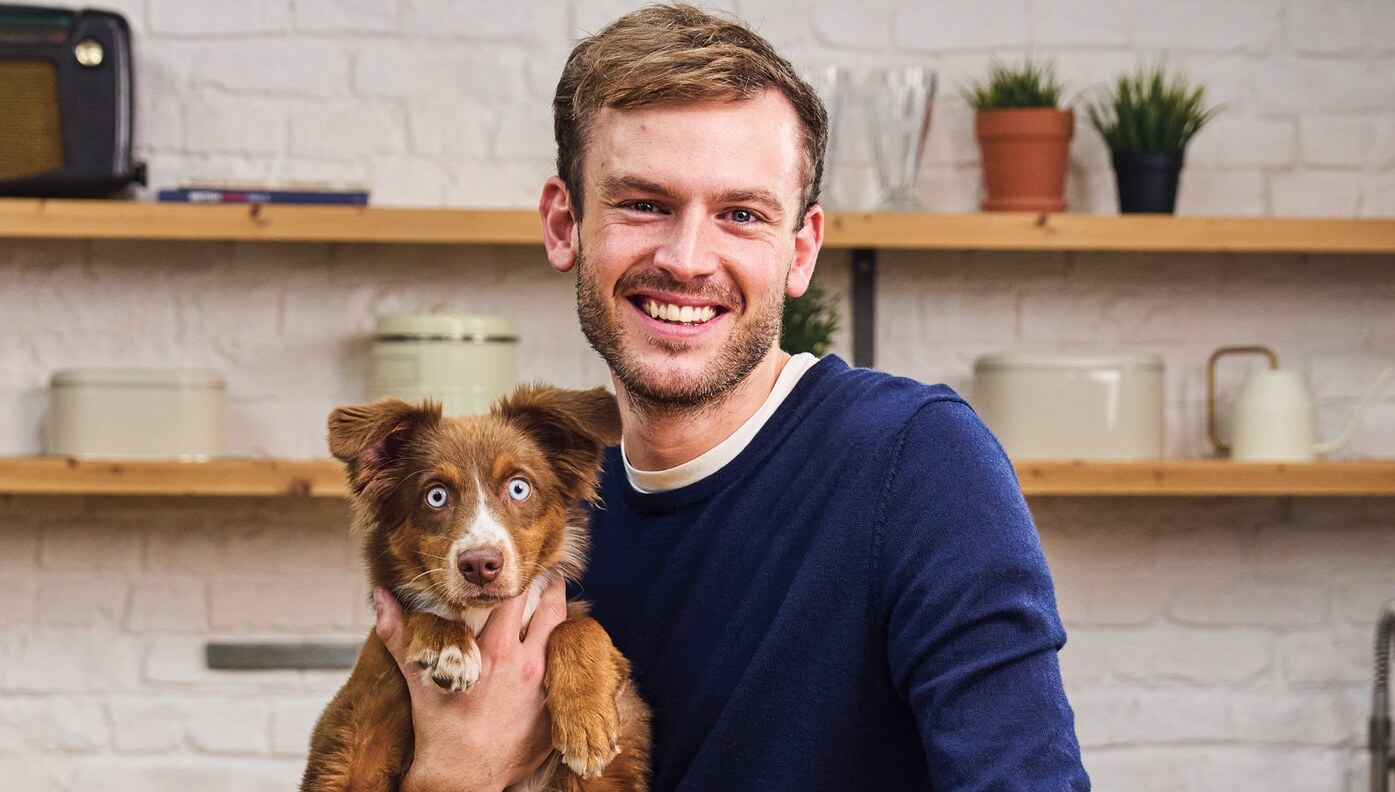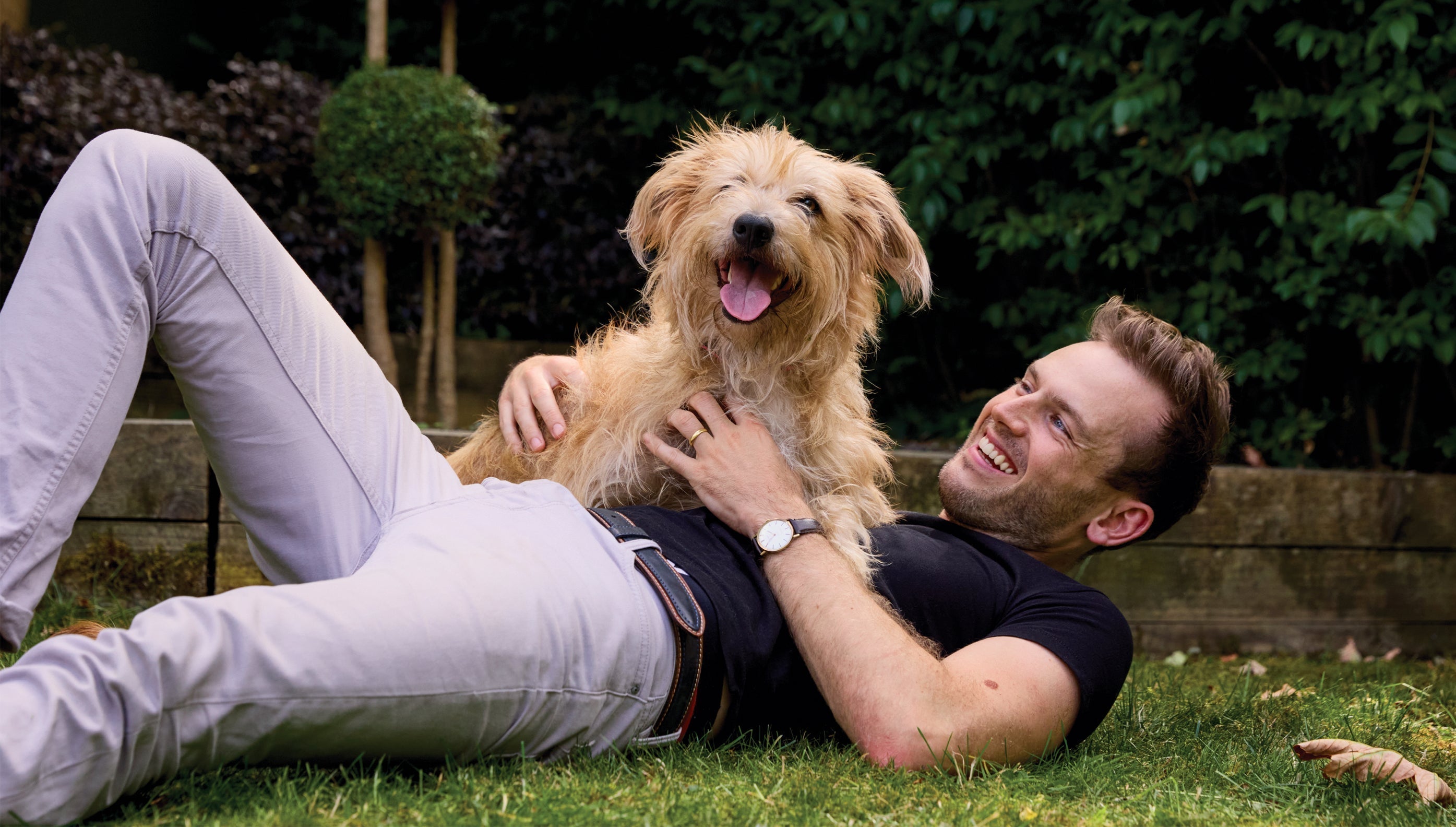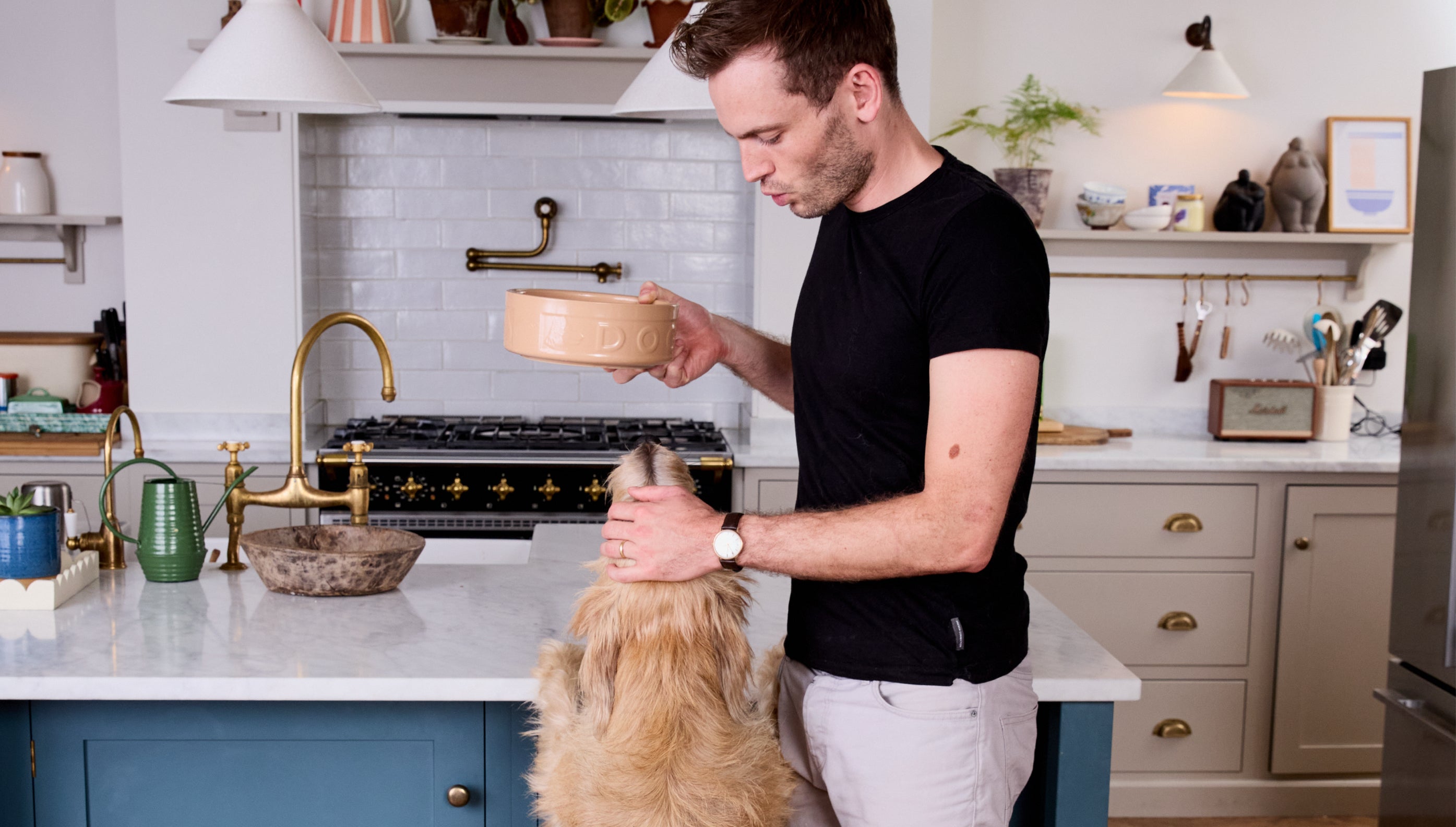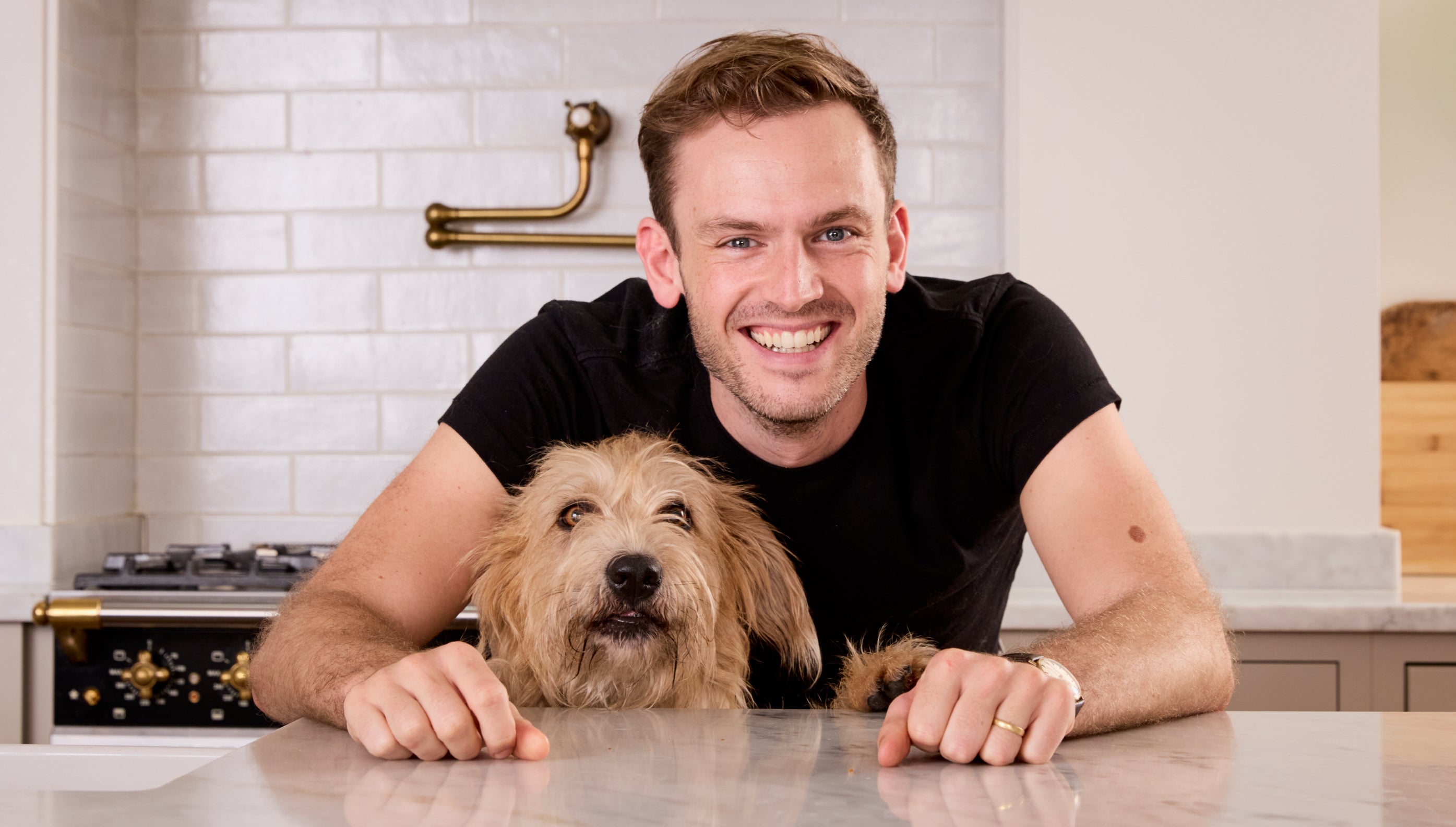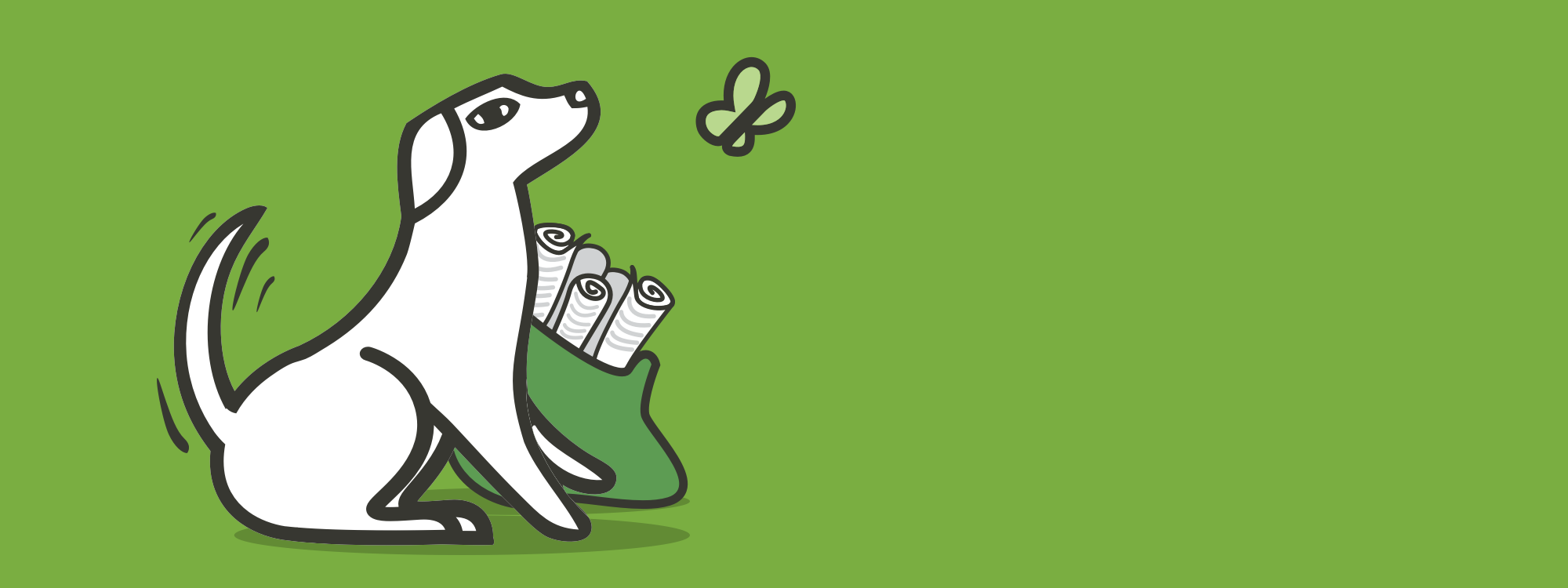From frenzied biting of fingers to bouncing around a room—it can be tricky to train an excitable pup. But it’s important that your new puppy learns the basics so that that you can effectively communicate with each other and live your best life together. Rory the Vet shows us how it’s done, from crate and toilet training, walking with a lead and more.
Training starts from the very first day you took your puppy home (at around 8-10 weeks old). You should find time every day to train. Remember, their attention span will be very short in the beginning, so training for short periods at a time will work best.
I always like to start with sit. This forms the basis for all your training moving forward and is a great way to keep you dog engaged.
MEET RORY THE VET

We’ve partnered up with animal whisperer and renowned veterinarian, Dr Rory Cowlam, to share his wisdom when it comes to all things furry. And boy, does this man know his stuff.
Starting with his degree from the Royal Veterinary College, Rory has since co-starred in the CBBC’s series The Pet Factor, shared his knowledge on the likes of Blue Peter and written all about it in his book, Secret Life of a Vet.
Follow him on Instagram
Puppy training schedule
There are various techniques your puppy will need to learn within the first few months. Introducing each one gradually will help them with their progression. I suggest the following:
• 3-12 weeks – Socialisation with other dogs (safely!), a variety of people as well as sights and sounds. More on this later!
• 10-14 weeks - Toilet training and sit. Toilet training should be your first focus as this can take a little time and as I mention above, sit should be step one!
• 14-18 weeks - Toilet training (continued) and teething. Your puppy will likely be mouthing at this stage so it's important you redirect their biting and train them not to nibble hands.
• 4-6 months - Tricks! Your puppy should be very receptive to training at this age and you should be out exploring the world, so recall is likely a big hallmark during this time.
• 8-11 months – Reiterating all of the above. Your dog is reaching puberty, and it may seem like all your hard work is going out of the window. This is the time your dog will test you, so go back to basics and use high value treats to get them to respond.

Puppy training tips
Before I go into detail about how to train your pooch to do the basics, these are my training tips that should help your pooch play along.
• Food is your best friend here. Rewarding each time they succeed in an action with a tasty treat will help them associate obeying your instructions as a positive experience (which will make them more likely to do it again!). I sometimes go as far as to suggest using your dog’s food allowance for the day as treats (dry food, that is! No one wants a pocket full of wet food!) Lily’s Kitchen’s training treats make great rewards too.
• Positive reinforcement and praise throughout will tell your pup that they’re on the right track while providing them with motivation. Never punish them for doing something ‘wrong’.
• Patience is key – it will take some time for you little one to pick up the ropes. But they’ll get there eventually.
• Consistency will help them understand what you’re asking of them.
Now, for the basics!
Toilet training
Toilet training is all about being receptive. Keep an eye out for sniffing behaviours and direct your dog to the correct spot before they even know they need to go. After they have done their business in the spot, make a huge song and dance about it and give them a treat.
Avoid negatively training them not to go in certain areas—often, they’ll be berated and your dog won’t understand why. It is much more effective to communicate with praise and treats once your dog has gone to the toilet in the desired place.

Crate training
When it comes to crate training, food will help you the most! I even went as far as to feed my pooch Nala in her crate for the first few weeks to encourage her to build a positive relationship with it. To this day, every time she goes in her crate or bed, she gets a little treat.
I would also suggest introducing your dog to the crate slowly, extending the times you leave them in there gradually. Making the crate cosy and comfortable will also help. You can read my full step-by-step guide here.
Mouthing/biting
Puppies explore the world using their mouths, so it isn’t any surprise that they like to bite your hands and fingers. If they’re anything like Nala, they’ll also like to steal your socks! But it’s important to teach your puppy not to bite while they are still young. There are a few ways to manage this.
• Toy trading. When they start chewing your hands, tell them firmly “no”, move your hands away and place a sturdy dog toy in their mouth.
• You can also mimic the behaviour of a puppy litter during play. If a puppy is bitten too hard by their sibling, they’ll respond by yelping loudly and skulking off. Beware that if you don’t commit to this, your puppy might think that it’s a game, get excited, and bite you more. But if you give an Oscar winning performance and your puppy understands that they have hurt you, this method can be incredibly effective.

Lead training
Lead training can start as soon as they ready to go out (after they have had their vaccinations). I like to get them used to wearing a collar and lead around the house in the beginning.
Rewards again are essential here, along with continuous praise. Make sure you don’t encourage pulling; we want to teach them to walk calmly beside you.
Socialising
Socialisation is super important for your pooch. Remember, your dog is likely to learn much more from their own species than they are from you.
I would recommend socialising your pup as soon as possible with friends who own vaccinated dogs. This is considered low risk (even for puppies who have only had their first vaccination) as long as it is done inside. When it comes to other dogs, I would wait until your vet gives you the ok before you go out and about.
It would also be a good idea to expose your pup to different sounds, such as buses, cars, vacuum cleaners and similar, to help your pooch get familiar with everyday noise.

Puppy training requires time, patience, and positivity
Practice, shower your pup with praise and positivity, be patient and reward when things go to plan – and you and your new best buddy should be on your way. Any issues, as always, consult your vet for further advice.
The information in this article is intended as a guide to help pets and pet parents on their journey together. It is provided for educational and informational purposes only and is not meant as a substitute for professional advice from a vet, behaviourist, trainer or other professional. We encourage all pet parents to consult with their vet and/or behaviourist to ensure their pet’s specific needs are met.
Published on 05/11/2024
